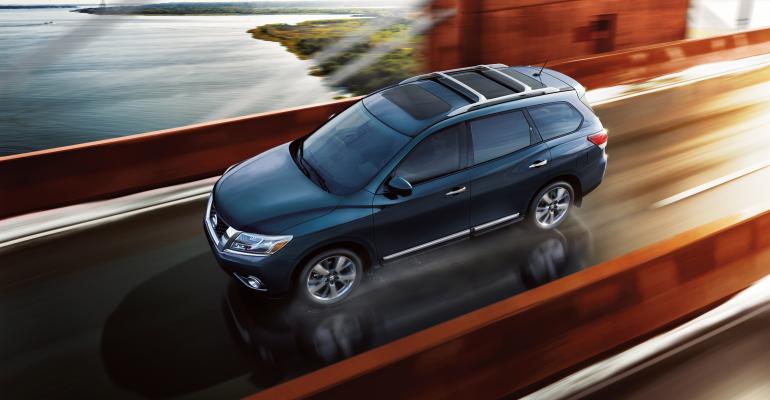DETROIT – After a 4-year absence Nissan returns to the North American International Auto Show in Detroit by detailing its Pathfinder concept this morning.
The concept hints at the swoopy, unibody, next-generation production model due this fall.
“With its new, aerodynamically optimized shape, the styling is a major step forward in the evolution of the (utility vehicle) – retaining its people- and cargo-hauling utility without looking quite so utilitarian,” Al Castignetti, vice president and general manager-Nissan Div., says in a statement.
The new fourth-generation Pathfinder will replace the current boxy, body-on-frame model that debuted in ’05.
The forthcoming generation marks the second time Nissan will use a car, rather than truck, platform for the Pathfinder, which the auto maker claims is its most-recognized nameplate after 27 years on sale and 1.2 million sold.
The second-generation Pathfinder, retailed from 1996 to 2004, also rode on a unibody platform.
The utility vehicle, no matter its underpinnings, typically has emphasized rugged capability. But Nissan says the fourth-generation model now will balance “capability, thoughtful technology and premium comfort” as well as move “upscale in look.”
Prominent design cues on the concept that may transfer to the production model are muscular fenders; a low beltline; front and rear spoilers; recessed front windshield; and thin A- and D-pillars.
Another design feature that also is functional is rear-suspension fairings, which should give the Pathfinder one of the best aerodynamic ratings in its segment, Nissan claims.
The auto maker is leaving many details of the production Pathfinder under wraps but says the concept is powered by a V-6 engine, mated to a “next-generation” continuously variable transmission.
This combination should boost combined fuel economy 25% above the current, third-generation V-6 Pathfinder’s average. The 2-wheel- and all-wheel-drive ’12 Pathfinder achieves 17/16 mpg (13.8/14.7 L/100 km) city/highway, respectively, according to the Environmental Protection Agency.
Also helping improve fuel economy will be a lower curb weight. Nissan says the new Pathfinder will weigh “substantially less” than the current model.
The Pathfinder due this fall will retain AWD and the ability to tow jet-skis, boats and trailers, and Castignetti says the horsepower rating for the fourth-generation model will be nearly the same as the “larger-displacement V-6” in the current model.
The ’12 Pathfinder has a 4.0L V-6 making a peak 266 hp.
Inside, the Pathfinder concept keeps the 3-row, 7-passenger configuration of the current model. Nissan boasts all rows have “excellent” legroom and the cabin overall is an “open, airy” environment.
Interior photos of the concept show an exotic-looking wood trim on the center stack and center console, and in a smaller scale on the door panels. The concept’s center-stack layout mimics that of Infiniti models, with a touchscreen at the top; its controls right below it; then audio and heating, ventilation and air-conditioning system controls near the bottom.
Nissan sold 25,935 Pathfinders in 2011. That’s a 21.0% increase from 2010’s volume but is well below the SUV’s record year of 2005, when 76,156 were sold, WardsAuto data shows.
The Pathfinder is one of 20 new or redesigned models Nissan says it will launch in the U.S. within the next two years. The auto maker expects more than 70% of its sales volume by the end of 2012 to be all-new or redesigned models.





